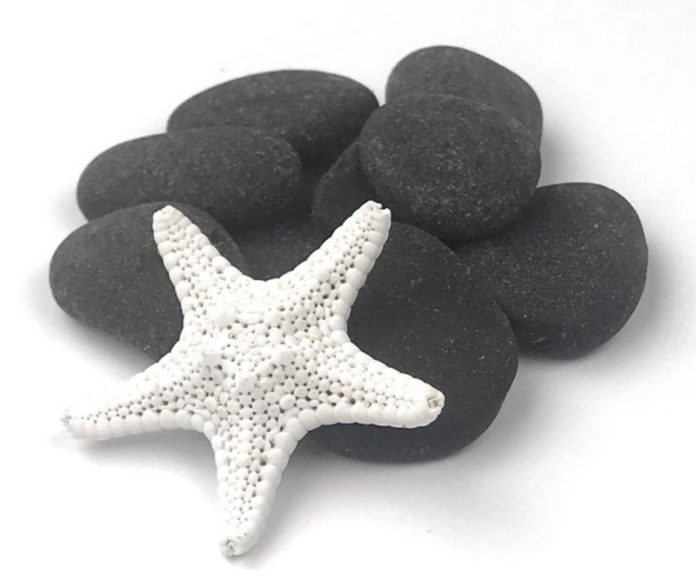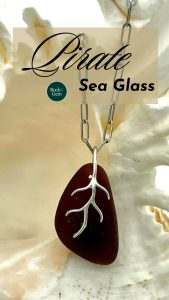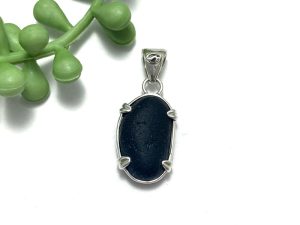
Sea glass colors are varied and plentiful. Sometimes called “mermaid’s tears,” these beach finds, including Lake Michigan beaches, make wonderful souvenirs not only for the naturally tumbled beauty of such pieces but also for the stories they can tell.
For instance, the Finger Lakes region of central New York is known as “wine country” but one of its unexpected collectibles is the lake beach glass, sometimes still faintly bearing the etched lettering of its origin story, found with particular prevalence along the eastern side of Seneca Lake at Lodi Point Beach State Park.
Why? Old wine bottles: Castaways of vineyards past.

But rarer still are the ancient maritime castaways of ale and rum bottles from the Golden Age of Piracy (1650-1730), known as “pirate glass,” that wash up on the beaches along the Caribbean, North American eastern seaboard, West African, and Indian Ocean shipping lanes and trading ports.
Such Shanghai surprises tantalize collectors but not every dark piece tells the same story. Because, as Captain Jack Sparrow liked to say, “Not all treasure’s silver and gold, mate.”
Sea Glass Color – The Dark Side
Pirate glass is colloquially described as “black” but the intensity of what is more likely to be blue, brown, green, purple or red glass has been deepened by the addition of cobalt, copper or iron oxides; or during the glass-making process, the addition of iron slag, or coal and wood ash.
Why darken glass? To extend the life of products and their transport because darker glass protects valuable liquids (like alcohol or oil) from degeneration by sunlight.
The same properties added to deepen color also improve the structural integrity of the glass and make it less likely to break during handling and storage.
At sea, water may turn too contaminated to drink, but not ale or rum. Or a seafaring elixir of lime, sugar and rum often kept aboard in dark bottles as a survivalist measure against scurvy.
The strong, dark glass was perfect, beachcombing blogger Kirsti Scott notes, “For pirates on seafaring ships!”

Photo by Cheryl Far
Stones & Scallywags
Black joins gray, orange, teal, turquoise, red and yellow as the seven most difficult sea glass colors to discover. Pirate glass looks black but not all black glass is old enough to truly be “pirate.”
Well after the 17th-century heyday of pirate ships, early 19th-century decorative black glassware, known as Black Amethyst, was produced, as were black glass buttons to accent Victorian French fashion and, in more mundane industrial use, for light bulb insulators produced in plants like the General Electric and Vitrite Company in Ohio.
Slag Glass
Vitrite also happens to be the name of the slag glass often used as a dielectric, or electrical insulator, at the bottom of common light bulbs and consisting mainly of ground glass with “copious amounts of lead and manganese oxides, the latter being responsible for the dark purple color.”
In fact, Black Amethyst has become its own desirable sea glass collectible, with pieces more than 80 years old washing up along the Great Lakes and particularly Lake Erie, where these incandescent light bulb plants operated.
Still, other black beach glass pieces can be found downstream of defunct glassmaking factories, the remnants of bars or nuggets used to colorize clear glass. Also, blue-black glass traces to gin bottles from Holland, and red-black glass to Portugal.
While no less lovely to look at or bring home, these glass pieces lack the unique merits to claim provenance beneath the Jolly Roger.
Caesar & the PiratesGlass blowing is believed to have developed around the time of Julius Caesar. As a young man en route to Rhodes to study oratory, Caesar also happened to have been taken hostage by Cilician pirates in 75 B.C. and held for ransom. For 38 days Caesar was an intolerable hostage. He chided them over how insulted he felt by their low ransom and demanded they double it; insisted on quiet when he needed to sleep; berated their lack of appreciation for the daily poems and speeches he forced them to listen to; and promised to crucify them all after his ransom was paid. (It was and he did.) If Romans were blowing glass, Caesar no doubt drove his pirate captors to drink. Now if only those presumed pieces of “pirate glass” could talk! |

Courtesy OceanSoul. net, Marco Island, Florida.
Ahoy, Pirates
What helps qualify a piece of black sea glass as “pirate glass” is age (glass from the mid-17th century was hand blown) and location (albeit not all seafaring routes had to be Caribbean).
Pirate glass is noteworthy for its size, for the number of bubbles trapped inside its glass, and for its primitive density that (when held up to light) can reveal a “glow” along the edges of its true dark amber, olive green, or purple color. Older pieces may be so dense and opaque that light will not shine through them.
“Pirate ships were no strangers to the shores of the Outer Banks [of the Carolinas], and neither were their rum bottles. After hundreds of years of these bottles being tossed around by the sometimes extremely violent and vicious waters of Hatteras Island, these black chunks occasionally appear on the shore, to a beachcomber’s delight,” collector Kristin Hissong recounted in 2020 for the Island Free Press.
Knowing What to Look For

The trick is knowing what you’re looking for because pirate glass, by virtue of its dark color, blends almost too well into a beach’s natural background and can look a lot like any other average black stone.
“The first time I found a piece of pirate glass,” Kristin says, “I was going back and forth over one little shell bed gathering other treasures. When I first noticed the piece in the sand, I dismissed it as asphalt. It was about four inches long and looked like a black chunk of NC Highway 12.
“I didn’t know sea glass could be so big or so dark. But right before I decided to leave, I thought I might as well pick it up, and to my delight, it was a huge chunk of black sea glass.
“When I held it up to the light, it glowed a deep olive green and the glassmaker’s breath was caught in an air bubble inside the glass,” she noted.
“Ahoy matey, we found Pirate Glass!”
This story about sea glass color previously appeared in Rock & Gem magazine. Click here to subscribe. Story by L.A Sokolowski.













